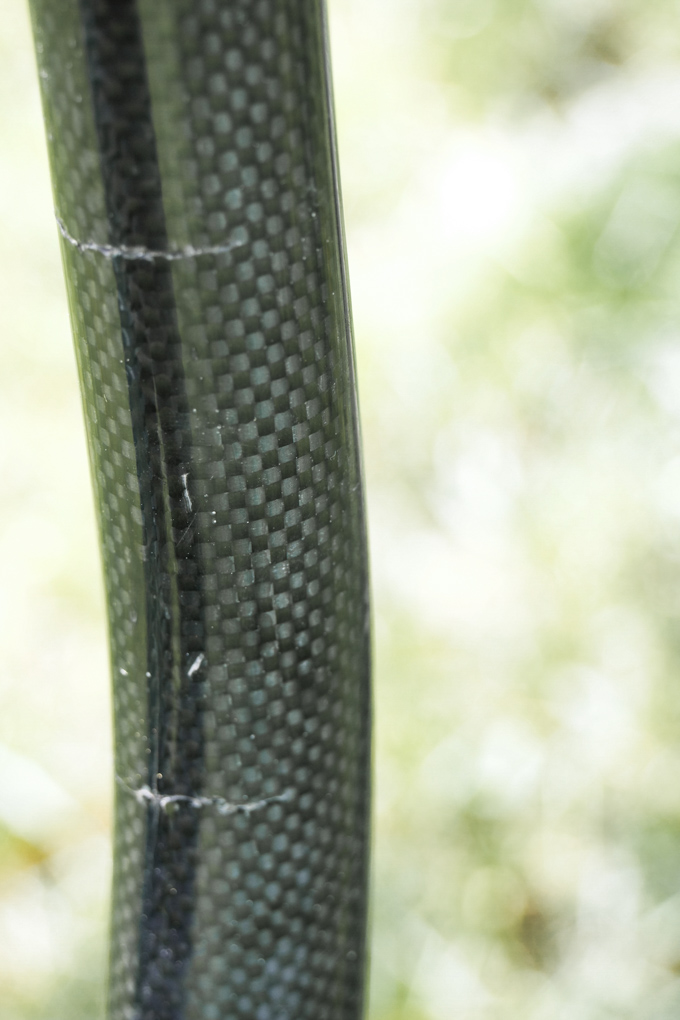Strength and Durability
I’ve tried higher end AT paddles in the past, and they’ve always had a nice feel. Unfortunately, I’ve seen way too many AT paddles break catastrophically on the water for me to spend money on one, until now. Many people note that although they tend to break, AT has a great warranty program. A good warranty is much appreciated, but it doesn’t do me much good when I have half a blade in the middle of a class V rapid or at the bottom of an inescapable gorge. Beyond that, it’s annoying, and often comes in the middle of the season when you can’t afford to wait a month for a warranty.
And that’s why I’ve paddled Werner paddles for so long. I’m hard on my paddles, and I believe in my gear working for me. If I’m doing a portage down a cliff band on a rocky scree slope with a boat on one shoulder and paddle in the other arm, you bet I’m going to place my paddle on some rocks and lean hard on it if that’s what it takes to keep my balance.
So how did AT’s new unbreakable paddle live up to the real world test? I’m sad to report that in my experience the answer is “not well.” I had 10 days with my Geronimo before I put two hairline cracks in the shaft a couple of inches apart between the center of the blade and the bends. To be fair, this occurred on Punchbowl falls on Eagle Creek in Oregon, which is a 30-foot waterfall. Some people may not subject their paddles to those kind of hits, but in this particular case, I had my finest Washington tuck on display and had a soft landing. On impact, my body felt as good as if I’d just exited a luxury spa, but my paddle wasn’t so lucky. I’ve had much harder hits while holding onto my Powerhouse and never had an issue.

AT defines secondary strength as the ability for the paddle to be damaged from impact but still maintain structural integrity and function by resisting catastrophic failure. Rather than a paddle cracking and then breaking into two pieces with further use, a high level of secondary strength should allow the blade to function in a usable state, allowing a paddler to finish a rapid or exit a run.
I spent the following day at the put-in for Robe Canyon outside of Seattle passing my paddle around the circle, watching various people do impromptu strength tests—bending the Geronimo over their thigh or on the nearest log while grimacing intently. I wasn’t terribly keen on doing my inaugural run down this remote class V canyon with a compromised paddle, but nobody could detect any weakness beyond the visual cracks, so I decided to give it a go.
The Geronimo passed the secondary strength test. I had no further issues on this run, nor on several subsequent trips on my backyard run through Eldorado Canyon on South Boulder Creek, a steep mank run that’s hard on paddles. I have no idea how this secondary strength compares to Werner, because I’ve never managed to put a crack in one.
I did warranty my paddle. I first contacted AT directly via email, but it took 2 1⁄2 weeks before I received a reply requesting photos. By that point I’d already contacted the shop I bought it from, who contacted AT and was told that it would be warrantied. The shop refunded my money directly and handled the remainder of the warranty themselves, so I have no idea how long the entire process took. But I think it’s safe to say that if you’re in the middle of prime runoff, you better have a backup paddle.
Having just returned from a trip to Veracruz, Mexico, I gained even more reason to question the durability of the Geronimo. One paddler in my group brought two bent shaft AT Geronimo paddles, the identical model to the one I used. He broke both paddles in less than two weeks. They both failed catastrophically when the blades cracked all the way across perpendicular to the shaft. Both failures occurred only from water contact with no rocks involved. One broke during a surf in a hole, and the other cracked while plugging a 20-foot waterfall.
Bottom Line
This review has included a lot of comparisons between the Geronimo and its Werner equivalent, the Powerhouse. Not only is that clearly the paddle it’s designed to compete with, but these are the two dominant players in the whitewater market today. Werner’s and AT’s competitors have limited distribution or high prices, which make them less accessible to the market, but by no means should they be ignored as viable options.
If you’re trying to make the decision between AT’s new line and the Werner classics, there are some differences when it comes to overall feel, blade design, grip, and cost (the AT retails for about $25 less than its Werner counterpart). In terms of performance, I slightly prefer the Geronimo despite all the years I’ve powered with a Powerhouse. The most significant advantage for me is a much more comfortable grip due to the grip placement and shape.
But today I’m back to paddling a Werner for one simple reason: trust. My experience suggests that the carbon Geronimo isn’t up to the task of withstanding the normal forces of creek boating. Given Werner’s long history of building strong and reliable paddles, I find it difficult to recommend the carbon Geronimo to most paddlers.
If, however, you have a gentler touch than I do and prefer the feel of the Geronimo, then it might be a good option for you.
